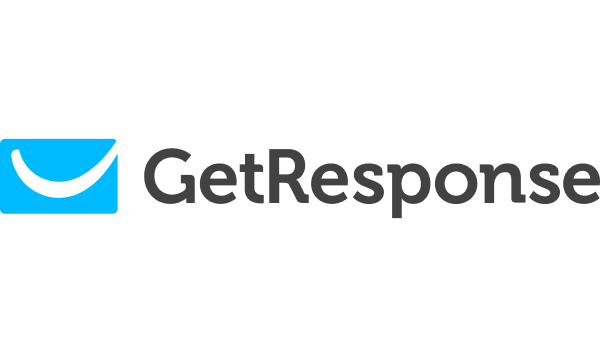- Premium features included
- No hidden costs or usage limits
- Scale from startup to enterprise



Investing in the right email marketing platform might be one of the smartest moves you’ll make for your business this year.
I’ve spent weeks testing both GetResponse and Mailchimp across various projects, and let me tell you — your choice really does matter, whether you’re just starting out or looking to scale up your marketing strategy.
These two platforms consistently pop up in conversations about email marketing, and for good reason. GetResponse offers an impressive all-in-one toolkit that bundles email campaigns with landing pages, webinars, and automation features without breaking the bank.
Mailchimp, on the other hand, has built its reputation on sophisticated automation capabilities, tons of integration options, and that signature user-friendly interface that makes it a go-to for growing brands juggling multiple marketing channels.
Throughout this comparison, I’ll walk you through the nitty-gritty of GetResponse vs Mailchimp — from what they’ll cost you to what they can actually do for your business. By the end, you should have a pretty clear picture of which one aligns better with where you want to take your marketing.
GetResponse
Mailchimp
Best For
Businesses needing all-in-one marketing tools
Growing brands wanting advanced automation
Pricing
Free plan + paid plans from $19/month
Free plan + paid plans from $13/month
Ease of Use
User-friendly with advanced tools
Beginner-friendly, intuitive interface
Value for Money
Excellent for multi-tool marketing needs
Strong automation but higher cost at scale
Overall Strengths
Overall Weaknesses
GetResponse
All-in-one platform (landing pages, webinars)
No SMS marketing; some tools in higher tiers
Mailchimp
Advanced automation & segmentation tools
Higher pricing for advanced features
GetResponse
Mailchimp
Email Campaigns
Automation
Landing Pages & Forms
Segmentation & Personalization
Reporting & Analytics
Integrations
GetResponse feels like it was built for businesses that want to consolidate their marketing toolkit. It goes beyond just email to include landing pages, webinars, and sales funnels — all under one roof.
I’ve found it particularly valuable for small to mid-sized businesses who don’t want the hassle of juggling multiple platforms or the expense of separate tools for each marketing function.
The interface isn’t the most beautiful I’ve seen, but it’s functional and gets the job done without overwhelming you with options. It hits a sweet spot for marketers who need more than basic email campaigns but aren’t ready for enterprise-level complexity.
Mailchimp has evolved from a simple email platform into a powerful marketing automation engine. It excels at creating personalized customer journeys through advanced segmentation, dynamic content, and behavior-based triggers.
The platform clearly caters to growing brands that prioritize data-driven marketing and want to create highly targeted campaigns across multiple channels.
While Mailchimp tends to get expensive as your subscriber list grows, the investment pays off if you’re leveraging their more advanced features. The analytics and reporting capabilities alone can justify the higher price tag for businesses making decisions based on customer data and campaign performance.
Subscriber Count
GetResponse Pricing (Email Marketing Plan)
Mailchimp Pricing (Standard Plan)
Key Differences
1,000
From $19/month
From $20/month
Similar entry-level pricing; GetResponse includes landing pages.
2,500
From $29/month
From $39.50/month
GetResponse is more affordable; Mailchimp offers stronger automation.
5,000
From $54/month
From $70/month
GetResponse includes sales funnels; Mailchimp supports advanced segmentation.
10,000
From $79/month
From $100/month
GetResponse remains cheaper; Mailchimp offers predictive analytics.
25,000
From $174/month
From $230/month
GetResponse is more cost-effective; Mailchimp provides more advanced reporting and personalization tools.
GetResponse maintains a more wallet-friendly pricing structure across all subscriber levels. This makes it particularly appealing for small to mid-sized businesses that want built-in landing pages, conversion funnels, and even webinar hosting without investing in separate tools.
Their pricing scales reasonably while still delivering solid automation and lead generation capabilities.
Mailchimp costs more at almost every tier, but there’s a reason for that premium. You’re paying for deeper automation possibilities, more sophisticated segmentation options, predictive analytics, and a broader integration ecosystem.
It’s better suited for businesses that depend heavily on personalized, data-driven marketing and need advanced reporting to optimize their customer engagement strategies.
GetResponse Free Plan
Mailchimp Free Plan
Subscribers
Up to 500 subscribers
Up to 500 subscribers
Emails/Month
Unlimited emails
1,000 emails/month
Automation
No automation in free plan
Single-step automation only
Landing Pages/Forms
1 landing page + signup forms
Unlimited landing pages & forms
Branding
GetResponse branding on emails & pages
Mailchimp branding on emails & pages
Both platforms offer free plans that can get you started without spending a dime.
GetResponse’s free plan is a bit unusual — they give you unlimited emails (which is generous) but severely limit you to one landing page and no automation whatsoever. It’s really only suitable for sending basic newsletters or building your list.
Mailchimp takes a different approach with their free offering. You’re limited to 1,000 emails per month (which isn’t much), but you get unlimited landing pages, signup forms, and even basic single-step automation for things like welcome emails or lead magnet delivery.
Both free plans display company branding on your communications and offer limited support.
If you’re primarily focused on content-heavy newsletters, GetResponse’s unlimited emails might be more valuable. If you need basic automation and want to create multiple landing pages, Mailchimp’s free plan offers more flexibility despite the monthly email cap.
GetResponse
Mailchimp
GetResponse hits the sweet spot for small to mid-sized businesses looking for an affordable all-in-one marketing solution. If you’re trying to reduce the number of tools in your stack while getting solid email marketing, landing pages, and basic automation, it delivers excellent value.
The webinar functionality is a standout feature if that’s part of your marketing strategy, and the pricing structure won’t punish you as severely when your list grows.
It’s particularly well-suited for content marketers, service-based businesses, and entrepreneurs who want a straightforward platform that handles multiple marketing functions without overwhelming complexity or cost.
Mailchimp shines for growing brands that want to leverage sophisticated automation, deep segmentation, and extensive third-party connections.
If you’re prioritizing data-driven marketing with advanced personalization and multi-channel customer engagement, Mailchimp’s robust feature set justifies its higher price tag.
It’s ideal for ecommerce businesses, established brands with larger marketing budgets, and teams that need powerful reporting and analytics to optimize their campaigns. The platform scales well with your business, though you’ll definitely pay for that growth.
When I dug through user reviews, GetResponse consistently gets praise for its intuitive, beginner-friendly interface. Users seem to appreciate the clean dashboard layout and straightforward campaign setup process — especially for email marketing and landing page creation.
Mailchimp also earns high marks for its user-friendly design. Many reviewers mention how quickly they could build and launch campaigns, though there’s a common thread about needing more time to fully grasp the advanced features like complex automation or custom segmentation.
GetResponse offers a relatively gentle onboarding experience for basic features, but users report needing more time to master its automation, webinar tools, and funnel-building capabilities. The complexity increases as you explore the platform’s more advanced offerings.
Mailchimp appears to be easier for complete beginners to grasp initially, but many users mention hitting a wall when trying to implement advanced segmentation, multi-step automation workflows, or cross-channel campaigns. The platform’s depth requires investment in learning to fully leverage.
GetResponse users frequently highlight the all-in-one marketing toolkit, affordable pricing structure, and responsive customer support team. Common criticisms focus on integration limitations and the need to upgrade plans to access more advanced features.
Mailchimp’s user base praises the platform’s sophisticated automation, extensive integration options, and detailed reporting capabilities. However, there’s widespread frustration with the pricing model, especially the steep increases as subscriber lists grow.
Many also express disappointment with limited features on lower-tier plans, forcing upgrades sooner than expected.
